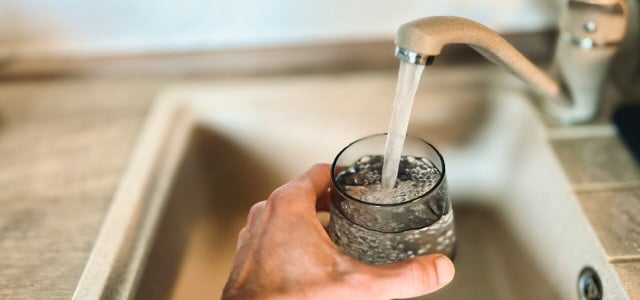
Tap water contaminated with lead is harmful to health. But the water pipes in your house or apartment may be made of lead. We explain what you need to know.
Drinking water containing lead can be a real health risk, especially in older buildings built before 1973. Although lead pipes are no longer permitted these days, they may still be present in some old homes and can lead to elevated levels of lead in the tap water.
Here you can find out how to identify lead pipes, what rights you have as a tenant or owner and what you can do to make your water safer.
Why lead in tap water is so dangerous

(Photo: CC0 / Unsplash / Sten Ritterfeld)
If you suspect lead in tap water, you should not take it lightly: Lead, even in small amounts, is harmful to health, especially for pregnant women, babies and small children. According to the Federal Environment Agency, it can attack the nervous system, disrupt blood formation and impair intelligence development.
Increased lead intake can lead to health problems, especially over a longer period of time. Although adults excrete some lead, it can be deposited in the bones and later return to the blood – for example during pregnancy.
How do you identify lead pipes in your home?
First the good news: lead pipes could only be installed in older buildings. However, if your home was built before 1973, there is a chance that it still has lead pipes. The material was then banned. The Federal Environment Agency recommends:
-
Look at the pipes: Check visible pipes, for example in the basement, in front of and behind the water meter. Lead pipes are softer than other materials such as copper or steel. For example, you can easily score them with a knife. They are silver gray in color.
-
Ask your landlord or manager: Find out when the pipes were laid and what material they are made of.
-
Have the water tested: A laboratory measurement can give you precise information about whether your tap water is contaminated with lead. However, that costs money. Before you take a sample, you should leave the water in the pipes for at least four hours to get a meaningful result. Your health department can advise you on this.
Your rights and obligations: Lead pipes must be removed

(Photo: CC0 / Unsplash / Jakub Żerdzicki)
Since the new drinking water regulations of 2023, lead pipes have been banned in Germany. This means that homeowners must replace or decommission all existing lead pipes by 2026 at the latest. Even small sections of lead combined with other metals can release a lot of lead into tap water through corrosion.
As a tenant, you have the right to request that the pipes be replaced if there are still lead pipes in the house. To do this, please contact the owner or property management. Consumer advice centers, tenant associations or the health department can also help you.
What to do if your tap water is contaminated with lead?
If a proper examination has shown that your tap water contains too much lead, you should not drink it or use it for cooking. This is particularly important for pregnant women, babies and small children. We usually recommend drinking tap water rather than mineral water for sustainability reasons. However, if you are exposed to lead, you should use packaged water instead, possibly labeled “suitable for preparing infant formula.”
Water filters are not recommended for removing lead from tap water. The manufacturers of the filters often advertise this, but the Federal Environment Agency also specifies that you should not rely on it.
Regardless of possible lead contamination, you should first let the water run for a while after it has been in the tap for a few hours. More on this: Should you let the water run first thing in the morning?
Read more on Techzle\.com:
- Residual water in the kettle: use or throw away?
- Drink 2 liters daily: Must or myth?
- Hot or cold water in kettle: which is better and cheaper?
** marked with ** or orange underlined Links to sources of supply are partly partner links: If you buy here, you are actively supporting Techzle\.com, because we then receive a small part of the sales proceeds. More info.